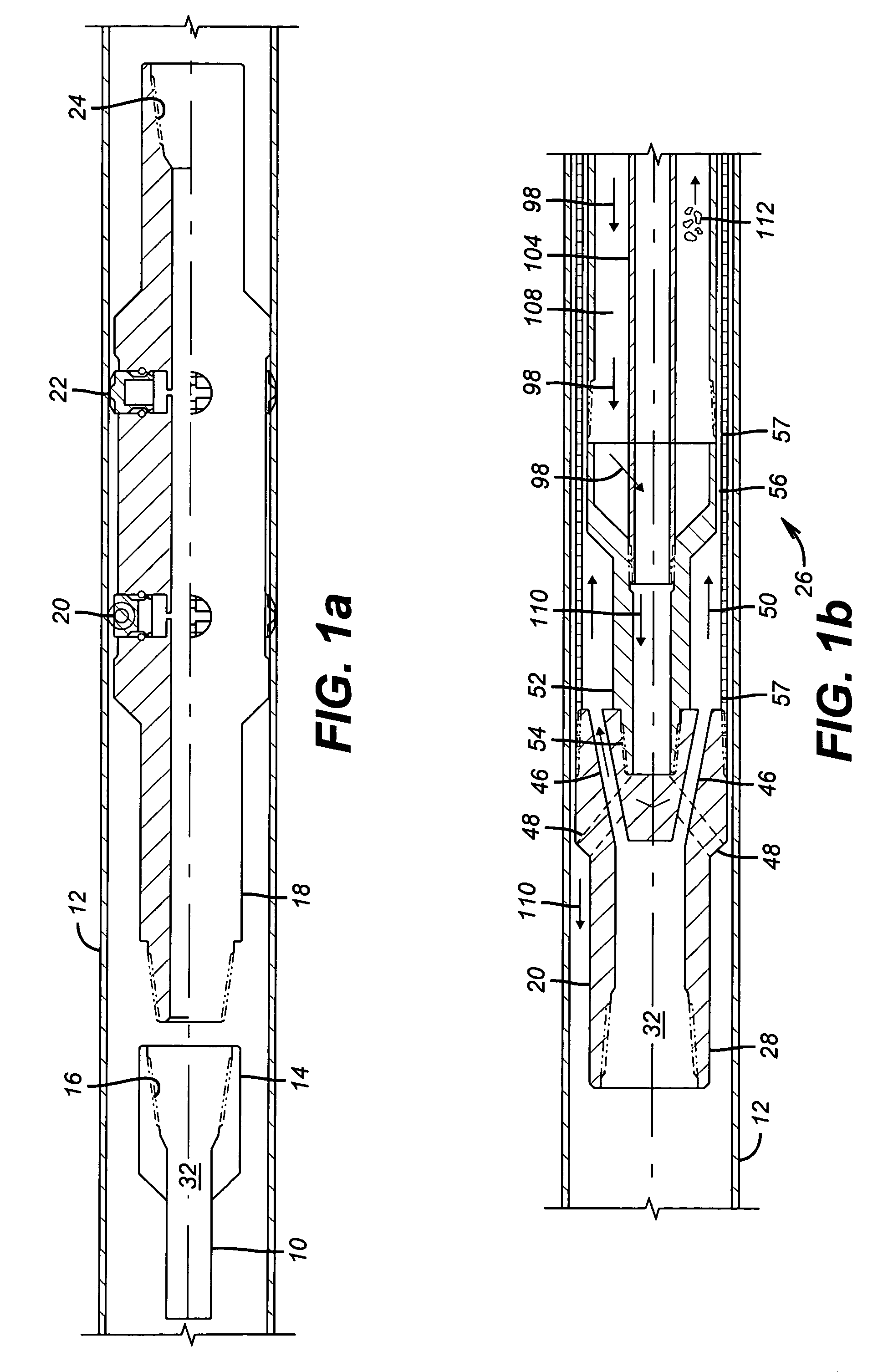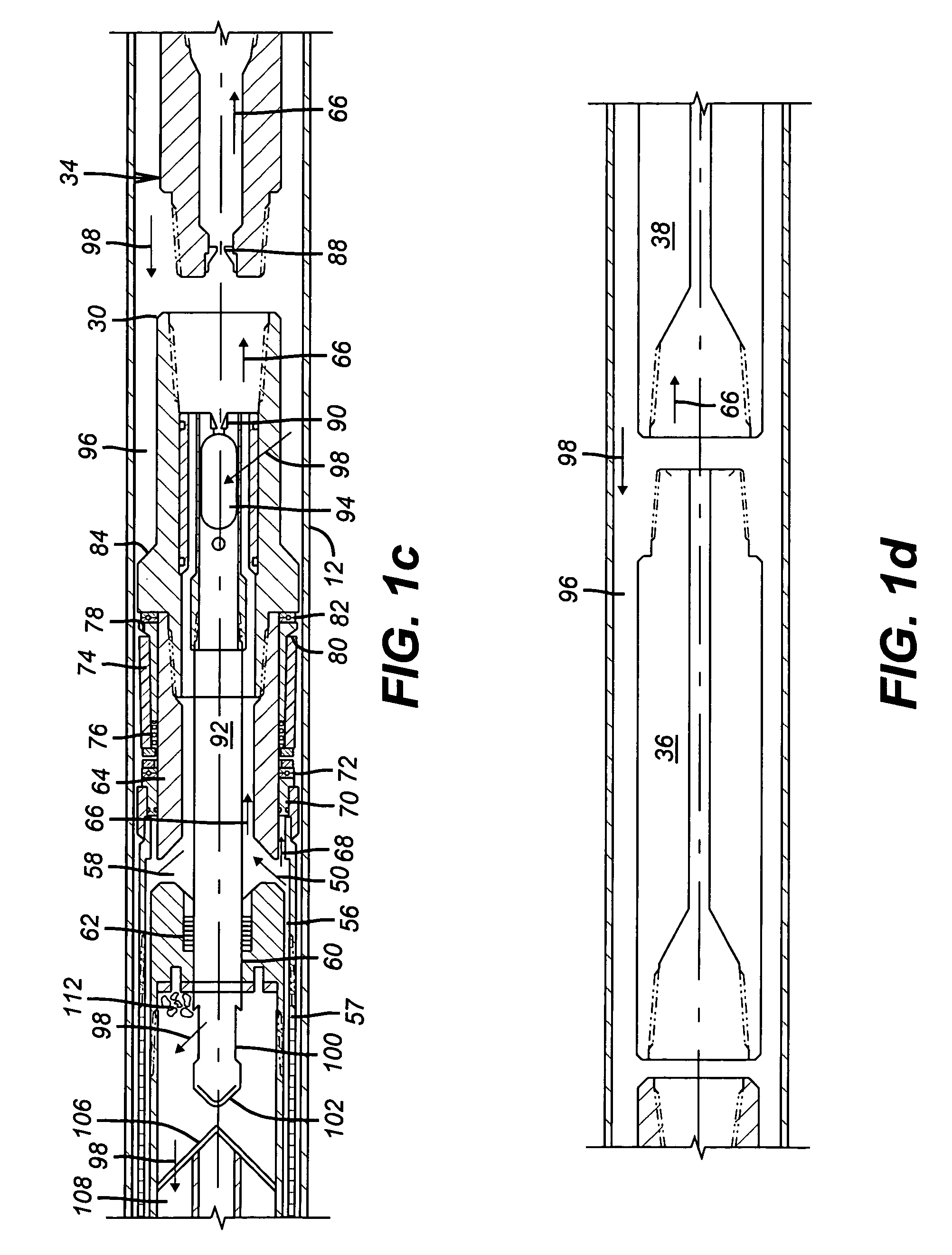Coiled tubing conveyed milling
a technology of conveyed milling and coiled tubing, which is applied in the direction of drinking water installation, borehole/well accessories, construction, etc., can solve the problems of erratic milling, coiled tubing is considerably weaker than rigid tubing, and the associated cost is fair, so as to maintain the weight
- Summary
- Abstract
- Description
- Claims
- Application Information
AI Technical Summary
Benefits of technology
Problems solved by technology
Method used
Image
Examples
Embodiment Construction
[0009] Referring to FIG. 1a, coiled tubing 10 is run into casing 12. At the lower end 14 is a threaded connection 16 to which an anchor 18 is attached. The anchor 18 is preferably of a known design as described in U.S. Pat. No. 6,276,452. It features extending gripping members 20 and 22 that are hydraulically actuated by fluid circulation down the coiled tubing 10. A connection 24 is at the lower end of the anchor 18 to attach the debris catcher 26. The debris catcher 26 runs from upper end 28 to lower end 30 in FIG. 1c. Continuing with the preferred assembly, a jet sub 34 is connected to lower end 30. A mud motor 36 (shown schematically) is connected to jet sub 34. A thruster 38 (shown schematically) is connected to mud motor 36. A mill 40 is connected to the thruster 38. Mill 40 comes in contact with the object 42 (shown schematically) to be milled in the wellbore. That object 42 could be a packer, a bridge plug, another downhole tool, or a section of casing or tubular. Depending ...
PUM
 Login to View More
Login to View More Abstract
Description
Claims
Application Information
 Login to View More
Login to View More - R&D
- Intellectual Property
- Life Sciences
- Materials
- Tech Scout
- Unparalleled Data Quality
- Higher Quality Content
- 60% Fewer Hallucinations
Browse by: Latest US Patents, China's latest patents, Technical Efficacy Thesaurus, Application Domain, Technology Topic, Popular Technical Reports.
© 2025 PatSnap. All rights reserved.Legal|Privacy policy|Modern Slavery Act Transparency Statement|Sitemap|About US| Contact US: help@patsnap.com



